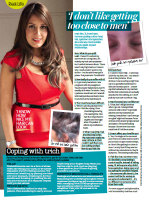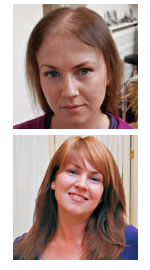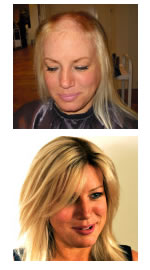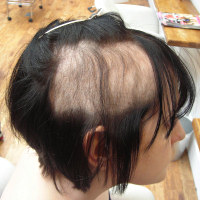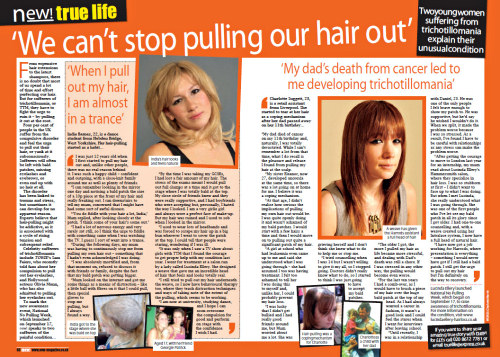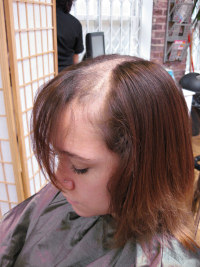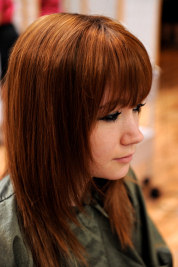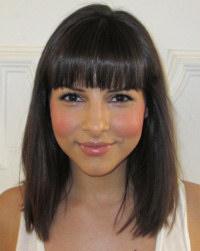What to expect on the day of your new Intralace System
So you’ve had your consultation and you’ve booked your new Intralace appointment. Of course you will wonder how it all works and probably be a little nervous. The first appointment is a long day and although we just need you to sit in the chair while we do all the work, you will be tired, exhausted almost, and we understand that comes from the anxiety often associated with the first appointment and the expectation of having beautiful hair again.
Be assured you are in safe hands! You are our guest for the day and we will guide you every step of the way. This is an outline of what to expect and what you need to know.
Arrival and Guests

We need you to arrive bright and early at 9.30am. That allows the procedure to be relaxed and everything to run smoothly.
Can I bring a friend for support?
By all means bring a friend but they are only allowed in the waiting rooms. Our main Studio areas are for staff and clients only; guests are not permitted in the studios as we have to respect the privacy of our other clients. The exception to this would be where the client is under the age of 16 – they are welcome to have an adult sit with them in the main studio. Our studios are open plan but you can request screens if you would like more privacy.
Space in the waiting rooms is rather restricted at some of our premises, so you may want to mention to your guests that you will be with us for most of the day (usually around 8 hours!) so it’s often a good idea for them to go shopping, visit museums, etc. and return at intervals.
Who’ll be looking after you?
A team of two technicians will be looking after you for the day. At the beginning of your appointment a Studio Manager will come and see you and also a colour technician and stylist will consult with you. Some clients are clear about their colour choices for their new hair but others need some guidance so we can help you with that. If you want your own hair coloured then please contact us prior to your new Intralace appointments so that we can explain what needs to be done (there is a skin test which is compulsory).
Likewise, a stylist is on hand to help with what would suit you if you don’t have something specifically in mind (some people bring photos of styles that they like). There are numerous hair style magazines scattered throughout the studios so you may find inspiration from them, but if not don’t worry, we have experts on hand to help you decide!
Refreshments
We serve a selection of Teas, Coffee’s, Smoothies and soft drinks throughout the day, we also serve Red or White Wine (not available at all Studios) and these refreshments are all complimentary. We also have to hand a selection of menus from local restaurants so when it comes to lunch time you can let us know what you would like and we can organise that for you. The choices include luxury sandwiches, baked potatoes, pasta and salads. Your team will need to have their lunch so this is also the perfect time for you to eat.
Passing the time during your appointment
The daily papers, numerous magazines and a choice of DVD’s are available to you throughout the day but of course you may choose to bring a good book with you to help pass the time. Laptops are also available (not at all Studios) so just ask your team if you would like to check your email or access the internet etc.
What happens during your appointment?
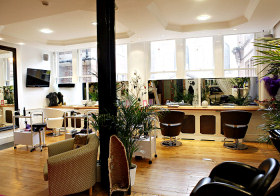
The initial application of the Intralace System takes many hours in order to achieve the best possible results. You’ll probably be very interested in it to begin with but as time passes you’ll probably find that the detail becomes less fascinating.
We start by shaping the mesh over the areas of concern. Your own hair is then gently retrieved through the material mesh. Once the mesh is in place we can then start to add the new hair to the mesh, building it up to achieve the intended effect.
Styling
The hair that we use is quite long (approx 16 inches unless you have requested Virgin Russian hair or specially ordered longer hair) so you may wonder about there seeming to be lots of it. However this is to allow plenty of scope for styling – it then needs to be cut and styled to suit you.
Your stylist will guide you on what is most suited to you. It can sometimes be difficult to envisage the possibilities if you’ve got used to having thin hair, but if you are still undecided about your finished style then remember we can tweak it when you return for your first wash and aftercare (normally 1 to 5 days later).
We use real hair for the Intralace system which means you can treat it like your own hair. We will talk you through how to care for your new hair and also demonstrate this in detail at your first wash appointment.
We understand this is a big day for you and some people may find it takes them a few days to adjust but be prepared to get lots of compliments on your new look! You will be leaving the Studio with a fabulous new head of hair and remember we are here to advise and support you as much as possible.
Departure
Please allow lots of time to get to the train Station or airport as having to rush for a train or plane will really add pressure to your appointment. We recommend that you call us prior to arranging your travel so that we can give you a realistic finish time.
A final word before your first appointment
We really want you to enjoy your new hair and your overall experience with us. Please do not hesitate to contact us via phone or email if there is ever anything you need. We look forward to taking care of you and returning your hair to its full glory.

